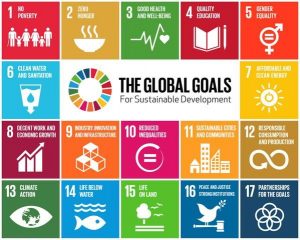
Bogota, February 12, 2019 – To build on its socio-economic progress, Colombia needs to fast track its productive transformation, according to the OECD’s Production Transformation Policy Review (PTPR) of Colombia, released today at a presentation hosted by Colombia’s National Planning Department (DNP).
The PTPR provides timely recommendations on how Colombia can advance on its path towards prosperity on a topic that is among the priorities of the National Development Plan 2018-2022.
The PTPR was produced by the Development Centre of the Organisation for Economic Co-operation and Development (OECD) in collaboration with the United Nations Economic Commission for Latin America and the Caribbean (ECLAC); the United Nations Conference on Trade and Development (UNCTAD); and the United Nations Industrial Development Organisation (UNIDO), with the support of the Swiss State Secretariat for Economic Affairs SECO.
Following a peace deal in 2016, Colombia is back on stage after more than five decades of conflict. Between 2000 and 2017, GDP per capita doubled, and the economy grew at an annual average of 4.3%, double the rate of growth of Latin America. The poverty rate declined from 50% to 28% in the same period.
Simultaneously, investors’ confidence has grown, placing Colombia in the spotlight for global investors.
In 2017, Colombia’s inward stock of foreign direct investment reached 59% of GDP, ranking amongst the highest in the Latin America and Caribbean region and above the OECD average of 48%.
However, the PTPR signals that despite the progress achieved over the past 20 years, Colombia’s economy still suffers from structural weaknesses that are hampering future advances.
Colombia’s economy remains increasingly reliant on natural resources. In 2017, primary production and mining accounted for 80% of exports, 10% more than in 1991.
And despite a relatively long tradition of manufacturing, the sector is becoming less relevant and less competitive. Productivity has not increased enough for Colombia to catch up with more advanced economies. Economic opportunities continue to be limited to a few territories.
In the OECD, Colombia suffers from the second-highest labour productivity gap between regions, after Mexico. In addition, there is still insufficient investment in innovation. Investment in research and development (R&D) in Colombia is 0.25% of GDP, which is 15 times less than the OECD average and well below the top R&D investing country in the region, Brazil (1.2%).
The PTPR confirms that Colombia has implemented reforms since 2006 to address its structural weaknesses and fast-track economic transformation. Colombia has strengthened its institutions, establishing, for example, the National Metrology Institute in 2011 and the Ministry of Science, Technology and Innovation in 2019.
The country has also improved financing for innovation and regional development by earmarking 10% of the national royalties’ system from mining to finance innovation projects in all its regions. The Production Development Policy (PDP) 2016–2025, drawn up by the DNP in co-operation with several ministries and agencies, represents a step forward by setting up a consultative process with all regions in the country to define priorities for increasing exports and productivity.
The PTPR provides a detailed analysis of the PDP’s assets and weaknesses. It identifies three game changers for Colombia to become a competitive and innovative nation that offers new opportunities for all territories and people:
- Strengthening the government’s planning and anticipatory capacities to shape the future. Colombia could update its planning structure by creating new incentives to achieve a shared commitment to budget allocation and policy implementation.
- Tapping the productivity potential of all regions. This requires a two-track approach: simplifying red tape and improving the communication infrastructure. At the same time, Colombia needs to invest in fostering export diversification and innovation and to shift from technology adoption to creation.
- Activating mechanisms to benefit more from trade and investment. To achieve export diversification, Colombia could look at deepening and benefiting more from regional integration and at improving its participation in global value chains, notably by increasing coordination between industrial development, trade and investment policies. Colombia could also strengthen its trade policy by taking advantage of technology transfers and technical co-operation.
According to the PTPR, Colombia is well positioned to move forward. The country can leverage both established and credible planning capacities and a set of well-established private sector institutions to help mobilize private sector investment for innovation and competitiveness.
African Eye Report


